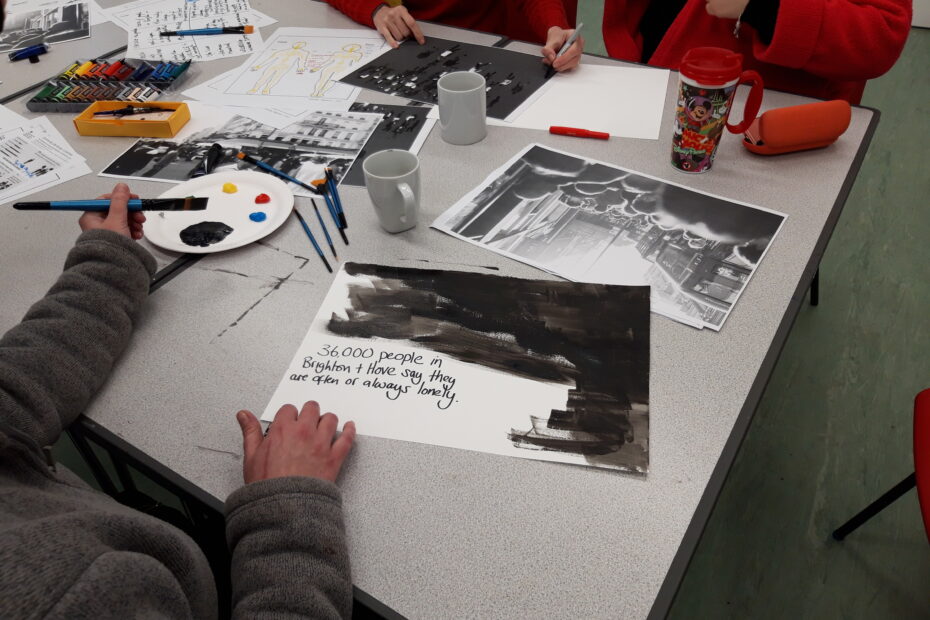by Aristea Fotopoulou, September 16, 2020
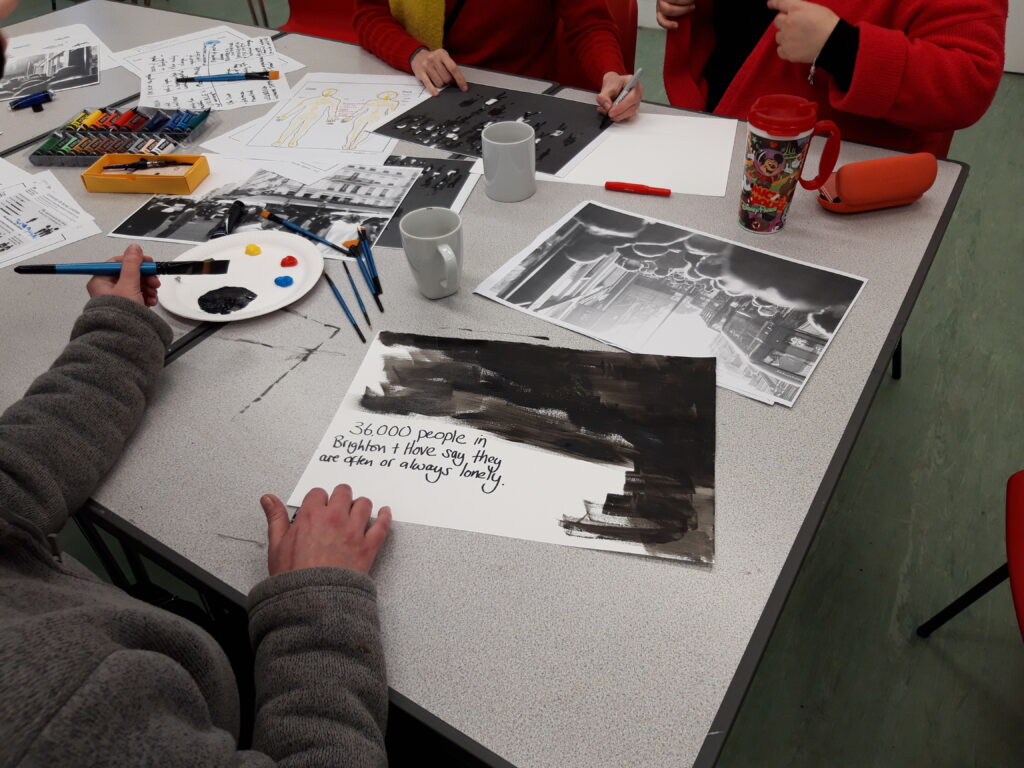
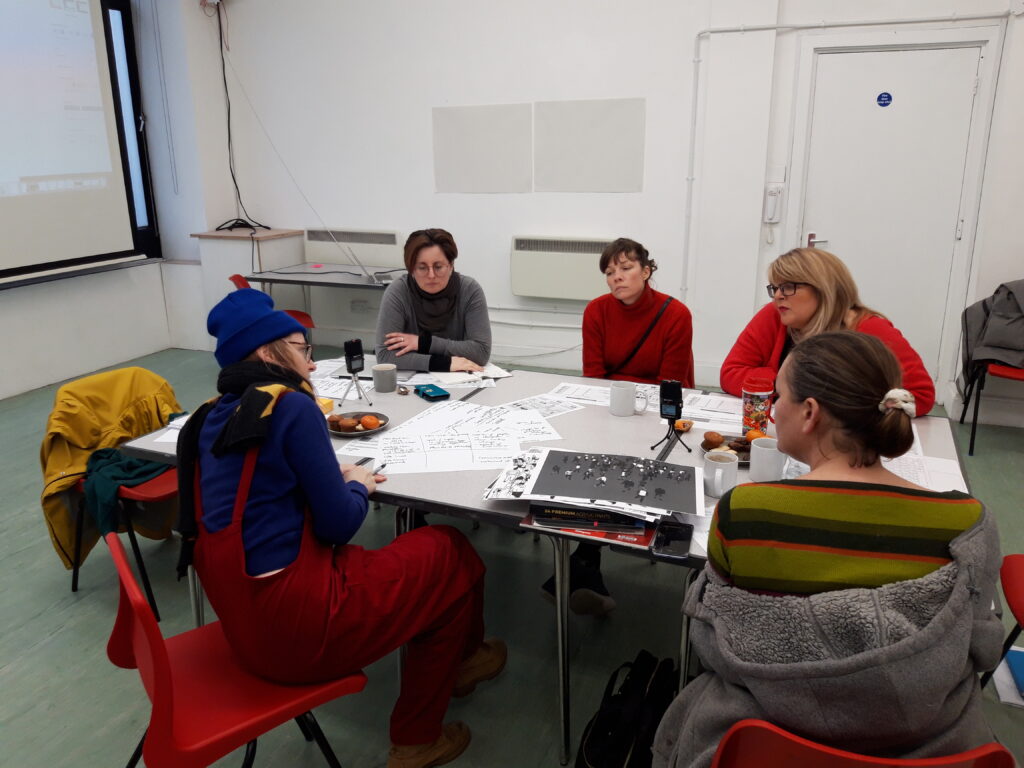
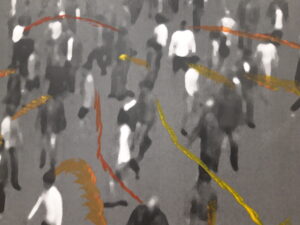
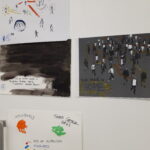
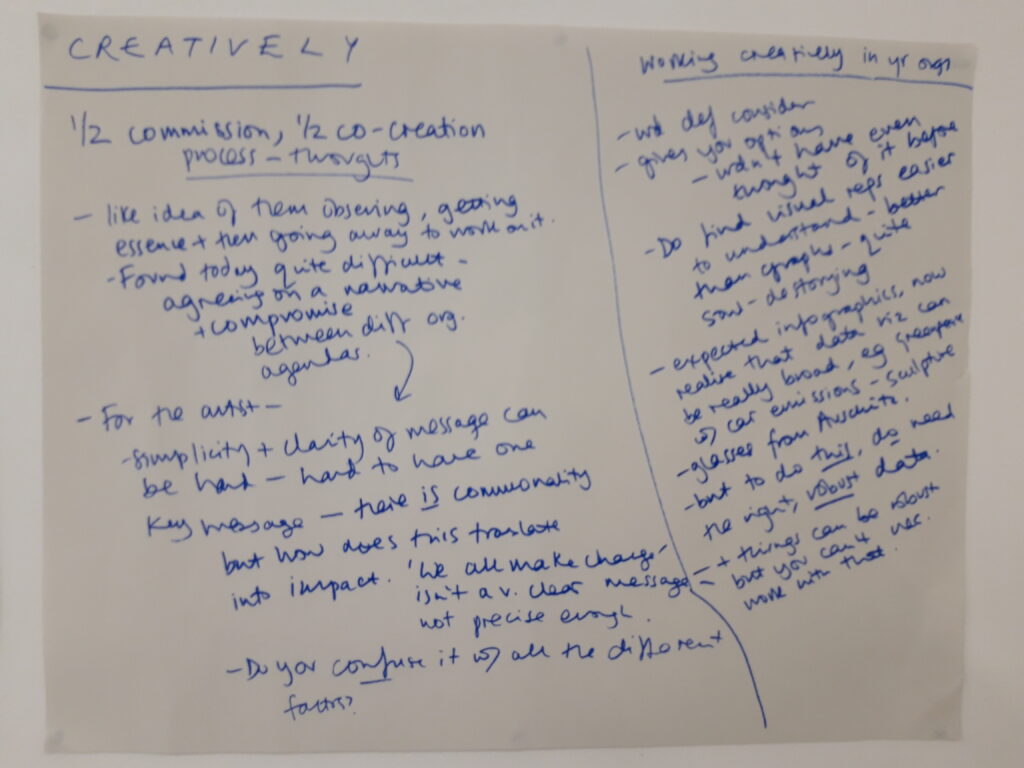
Following two data workshops in February 2020 (where participants were introduced to a range of concepts around data science along the lines described in the ART/DATA/HEALTH Data Skills Toolkit), the ART/DATA/HEALTH project team organised two days of creative workshops, hosted at the PHOENIX Art Space, in Brighton.
A Collective Data Story
Following on from the conclusion of the Datahub workshops, where participants created a data story zine, at the creative workshops participants tried a challenging task: to come up with a collective data story about a common issue. Participants decided to focus on loneliness and wellbeing, and the workshop facilitator, researcher and VR artist Kate Genevieve, helped participants to explore a wealth of data around these topics. We mainly worked with data about loneliness from the Office of National Statistics (2018). Kate also showed us Functional magnetic resonance imaging (FMRI) research findings, such as those related to the Cyberball 3D experiment on social exclusion* (Mavromihelaki et al. 2015), as well as the Human Connectome project (Available here https://academic.oup.com/scan/article/14/4/423/5423022 ).
Data sources and visual formats
When thinking about their data story, participants also identified alternative data sources, such as local charity data that show how social prescribing of social companionship helps people.
We also brainstormed ideas about the format of the creative data story – a dominant idea was to create a map of affinities and connections, where recovery groups would be layered upon the geographical map of Brighton and Hove.
During the workshop we talked about creating a colourful language of connection, and came up with a storyboard to better express the data story.
Body maps
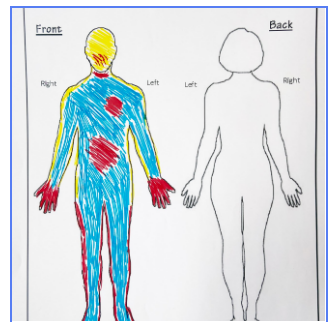

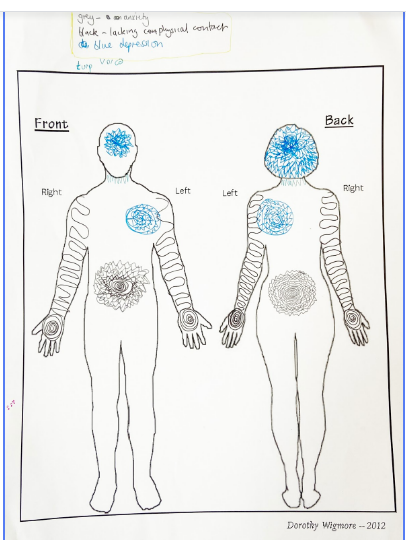
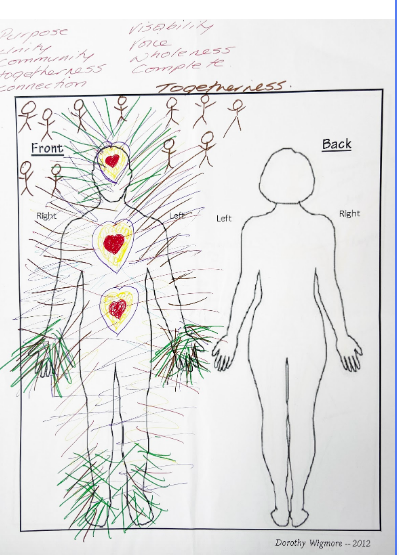
Kate facilitated a body map session in order to explore how visuals language can bring forth hidden emotional realities and to demonstrate that data on human and subjective experiences can be collected using visual creative techniques. Kate asked the group to imagine how memory content could be displayed on a visual map (The principles of body mapping are outlined in the 2014 study available here “Mapping Emotions in the Body” http://www.openculture.com/2019/05/mapping-emotions-in-the-body.html).
It was interesting to note that:
- Many participants drew beyond the border of the body as they noted emotional experience extended beyond the bodies boundaries.
- Participants devised novel ways to notate connection to other humans (either by representing them symbolically or abstractly).
- Participants explored graphic ways of exploring ambiguous states of being eg. when zones of the body are both devoid of feeling and heightened in feeling.
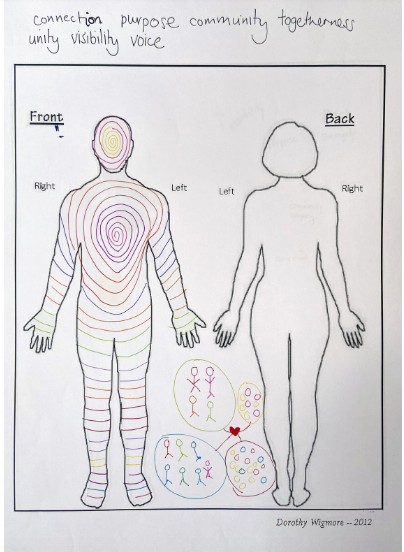
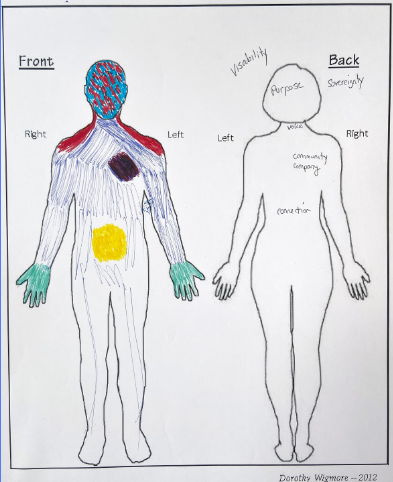
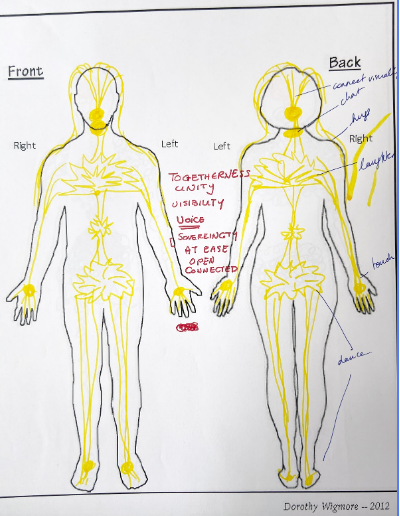
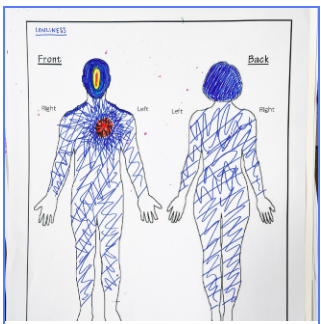
Footnote
*A 3D interactive gaming paradigm for the secluded space of an fMRI scanner. The Cyberball3D+ game is a virtual ball-toss game in which the participant is either excluded or not from ball tossing played by three virtual players and the subject in the scanner. It has been used in simple sketch mode by neuroscientists for research on ostracism, social exclusion or rejection as well as discrimination and prejudice.
References
Naomi Eisenberger: The pain of social disconnection: examining the shared neural underpinnings of physical and social pain, Nature Reviews Neuroscience 13 (6), 421-434.
Mavromihelaki, Evangelia, Eccles, Jessica, Harrison, Neil, Grice-Jackson, Thomas, Ward, Jamie, Critchley, Hugo and Mania, Katerina (2015) Cyberball3D+: a 3D serious game for fMRI investigating social exclusion and empathy. Valletta, Malta, 9 – 12 September 2014. Published in: Camilleri, Vanessa, Dingli, Alexei and Montebello, Matthew, (eds.) 2014 6th International Conference on Games and Virtual Worlds for Serious Applications (VS-Games). 1-8. Institute of Electrical and Electronic Engineers ISBN 9781479940561. Available here: http://sro.sussex.ac.uk/id/eprint/53280
Lauri Nummenmaa, Enrico Glerean, Riitta Hari, And Jari K. Hietanen (2014) Bodily Maps Of Emotions. PNAS January 14, 2014 111 (2) 646-651; Https://Doi.Org/10.1073/Pnas.1321664111.
Office of National Statistics (2018) Loneliness – What characteristics and circumstances are associated with feeling lonely? Analysis of characteristics and circumstances associated with loneliness in England using the Community Life Survey, 2016 to 2017. Available from https://www.ons.gov.uk/peoplepopulationandcommunity/wellbeing/articles/lonelinesswhatcharacteristicsandcircumstancesareassociatedwithfeelinglonely/2018-04-10
